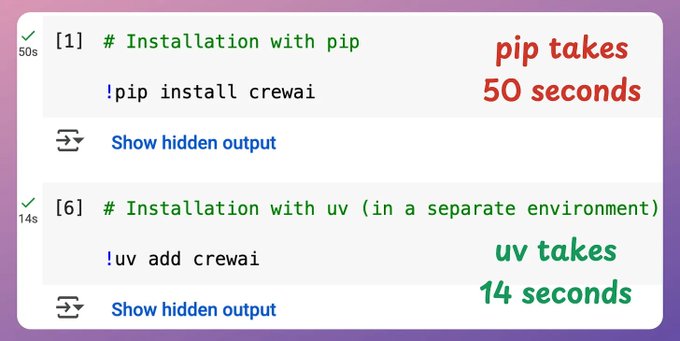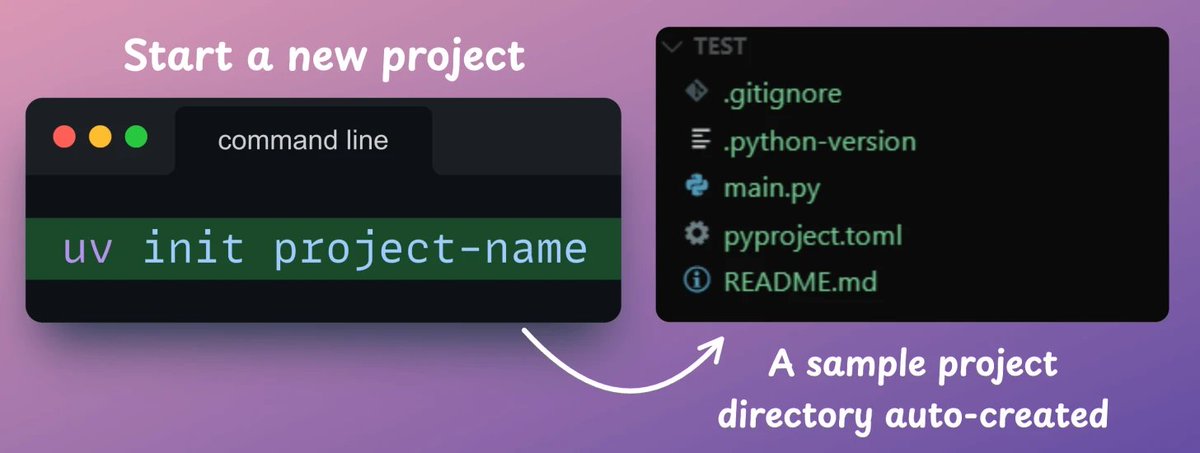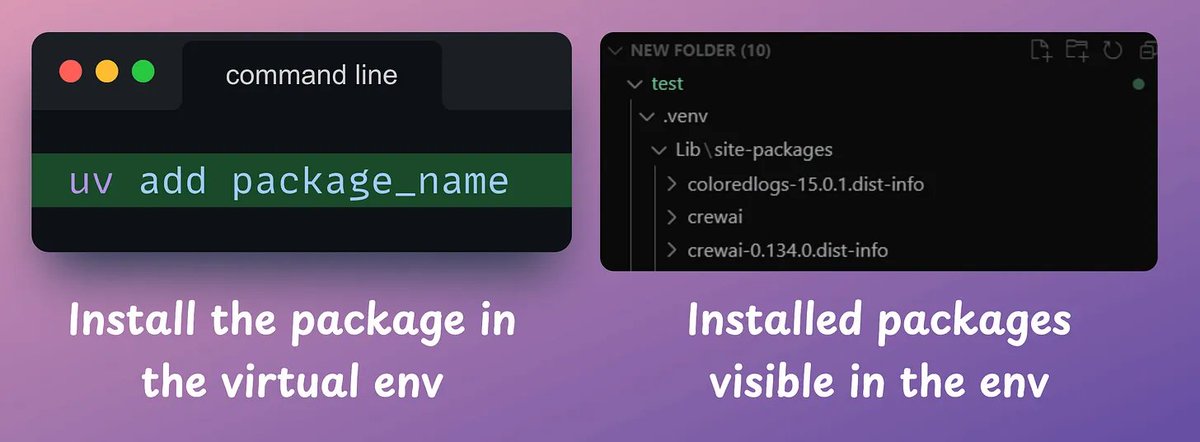Why uv is Killing Traditional Python Tooling (And Why You Should Care)
The Python tooling ecosystem has been a mess for years. pip is slow, poetry is bloated, pipenv is abandoned, and pyenv barely works on Windows. Enter uv — a single Rust binary that's about to make most of your Python tools obsolete.
Performance That Actually Matters
Here's the brutal truth: your current workflow is wasting your time.
- Virtual environment creation: 80x faster than
python -m venv - Package installation: 4-12x faster without cache, ~100x with cache
- Dependency resolution: Seconds instead of minutes
This isn't marginal improvement — it's a paradigm shift. When package installation goes from 30 seconds to 0.3 seconds, you stop context-switching. Your development flow becomes uninterrupted.
The All-in-One Replacement
uv doesn't just replace pip. It eliminates your entire toolchain:
# Before: Multiple tools, multiple configs
pip install requests
poetry add fastapi
pipx install black
pyenv install 3.12
virtualenv myproject
# After: One tool, one workflow
uv add requests fastapi
uv tool install black
uv python install 3.12
uv init myproject
No more juggling pyproject.toml, requirements.txt, Pipfile, and poetry.lock. One tool. One config. Done.
Real-World Workflow
Here's how uv actually works in practice:
1. Project Initialization
uv init backend-service
cd backend-service
Creates a proper project structure with pyproject.toml, .python-version, and .gitignore. No manual setup required.
2. Dependency Management
# Add production dependencies
uv add fastapi uvicorn pydantic
# Add dev dependencies
uv add --dev pytest black ruff mypy
# Add with version constraints
uv add "sqlalchemy>=2.0,<3.0"
uv resolves dependencies instantly and updates both pyproject.toml and uv.lock atomically.
3. Environment Handling
# Run scripts (auto-activates venv)
uv run main.py
# Execute with specific Python version
uv run --python 3.12 main.py
# Install and run tools without polluting project
uv tool run --from black . --check
No more source .venv/bin/activate ceremony. uv handles activation transparently.
4. True Reproducibility
# Clone a project and get exact dependencies
git clone <repo>
cd <repo>
uv sync # Installs exact versions from uv.lock
Works across macOS, Linux, Windows, and different Python versions. No "works on my machine" problems.
Advanced Features You'll Actually Use
Script Dependencies
#!/usr/bin/env python
# /// script
# requires-python = ">=3.12"
# dependencies = [
# "requests",
# "rich",
# ]
# ///
import requests
from rich import print
Run with uv run script.py — uv installs dependencies automatically.
Python Version Management
# Install any Python version
uv python install 3.13-dev
# List available versions
uv python list
# Pin project to specific version
echo "3.12" > .python-version
No more pyenv installation nightmares or Windows compatibility issues.
Tool Isolation
# Install global tools without conflicts
uv tool install black
uv tool install ruff
uv tool install mypy
# Run without installation
uv tool run --from httpie http GET api.github.com
Each tool gets its own isolated environment. No dependency conflicts.
Migration Strategy
If you're on poetry/pipenv:
# Convert existing pyproject.toml
uv sync
# Or migrate from requirements.txt
uv add -r requirements.txt
uv reads existing configs and migrates seamlessly.
Why This Matters for Backend Development
When you're building APIs, microservices, or data pipelines, tooling friction kills productivity. Waiting 2 minutes for poetry to resolve dependencies while you're debugging a production issue isn't acceptable.
uv eliminates this friction:
- Fast iteration: Add packages instantly during development
- Reliable deployments: Lockfiles ensure identical environments
- Simple CI/CD: One tool, consistent behavior across environments
- Multi-service workflows: Manage multiple Python services efficiently
The Catch
uv is relatively new (first release in 2024). Some edge cases with complex dependency trees might need manual intervention. Corporate environments might resist adopting "yet another tool."
But the performance gains and workflow simplification make these concerns minor compared to the benefits.
Bottom Line
uv isn't just faster — it's a better way to work with Python. If you're still using pip and managing virtual environments manually in 2025, you're doing it wrong.
Try it on your next project. You won't go back.
# Get started now
curl -LsSf https://astral.sh/uv/install.sh | sh
uv init my-project
cd my-project
uv add fastapi
uv run -m uvicorn main:app --reload
Pro tip: Don't add uv.lock to .gitignore. That lockfile is what makes your deployments reproducible.
Bonus Round: Meet uvx, Your New Best Friend
If you love pipx for running apps in isolation, you’ll adore uvx, uv’s sidekick. Want to try a tool without polluting your system? Run:
uvx black --version
This spins up an isolated environment, installs Black (the Python formatter), and runs it—all in one go. It’s perfect for testing CLI tools or one-off scripts. Pro tip: uvx leverages uv’s speed, so it’s lightning-quick too!
follow on X/Twitter


